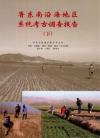
Fang Hui, Anne Underhill, Gary Feinman, Linda Nicholas, Luan Fengshi, Yu Haiguang, and Cai Fengshu, eds.
Beijing: Cultural Relics Press, 2012
Reviewed by Qian Yang (PhD Candidate, Shandong University, China)
Modern archaeology was developed in China one century ago in order to examine the validity of historical documents. Due to its unique theories and the improvements in scientific methods applied, the gap between archaeology and history seems to have increasingly broadened. Some scholars argue that archaeology has become an independent discipline distinct from history. As a subject to explore human activities in the past, archaeology still makes a great contribution to historical research. Archaeological Report of Regional Systematic Surveys in Southeast Shandong is a good example.
This book consists of four parts: the introduction to the survey region and method, main sites, significant artifacts, and the interpretation of findings. It first introduces the regional systematic survey, or full- coverage survey, which had been fully developed in Mexico’s Oaxaca valley and was introduced to China in the 1990s. However, when it comes to its exact practice in China, there is still no consensus. For instance, researchers hold different opinions about the scope of distributed ceramics when defining a site. The method used in this book has been modified in consideration of local topography and landscape, and the description of this method is even detailed enough to include exact map scales, team size, best seasons, and so on. This case study provides useful experience to the spread of this method in China.
According to the findings in the survey, the authors analyze the settlement patterns in different periods. In the Beixin period (5,300-4,300 B.C.), fewer people inhabited this area. Yet once the area was settled, the population grew rapidly and was concentrated in several settlements in the Dawenkou period (4,300- 2,600 B.C.). In the Longshan period (2,600-2,000 B.C.), the settlements could be categorized into four grades which indicate the emergence of the state. Although there was no artifactual or other material indication of Shang presence in this region, many of the larger Zhou settlements were situated in elevated and defensible locations, indicating the possible existence of local independent polities. It was not until the Qin period that this region was finally under the effective control of the centralized government in the west. Large Qin-Han settlements were well distributed.
The settlement pattern shift in the southeast Shandong also reflects the local trajectory of social complexity and the relationship between this region and the state in the west. In the past the central plain was overemphasized, while less attention was paid to the peripheral regions. In historical documents, all peripheral areas were integrated into the central plain from the Longshan period onward. According this book, however, there was a long-lived political and economic independence in southeast Shandong, and its influence is not as unimportant as indicated in the textual accounts. In line with other programs to construct a more unified imperial domain, emperors of Qin and Han were intent on breaking down the local traditions. Therefore, the social change model herein is multifaceted, rather than the conventional linear model.
In historical documents, descriptions regarding the peripheral regions and grassroots society are quite limited, and only represent the official opinion. Archaeology can overcome these drawbacks and give us more information that is not recorded in the documents. However, this survey was too early to have employed GPS records. Therefore, it is impossible to explore the relationship between human activities and landscape using GIS. It is also necessary to do further archaeological excavations to obtain more useful data.
